Michaela Johnston works and studies between her rural home in West Wales and London. Her approach to woven textiles is very process based, looking at each element of production and exploring the routes that can be taken using sustainable practices and circular materials. She designs for purpose and thoroughly considers how her textiles will fit into society and how it works alongside the values she has developed as a designer throughout her Textile Design BA.
Michaela is excited by the possibilities of designing with the future in mind and while doing so exploring the processes of the past. Her journey now continues onto the Material Futures MA at Central Saint Martins, UAL, where she hopes to explore further with a broader spectrum of design approaches and the integration of science and technology.
 Her graduate project, Circular Willow incorporates all the values she has built up through her BA focusing on designing for purpose, using local production methods and materials. Circular Willow began with the waste bark from a local basket weaver during lockdown that she took through a variety of experimental processes to become a useable yarn, able to hold colour from food waste and plants.
Her graduate project, Circular Willow incorporates all the values she has built up through her BA focusing on designing for purpose, using local production methods and materials. Circular Willow began with the waste bark from a local basket weaver during lockdown that she took through a variety of experimental processes to become a useable yarn, able to hold colour from food waste and plants.
From this she designed multifunctional pocket aprons using layered weaving techniques which incorporated her willow yarn to enable craftspeople to be more mobile while working. The pockets are made from bast fibres, linen, hemp and willow yarn, and dyed with onion, iron, nettle, logwood, and turmeric.
 This design can be used in a domestic setting, however it is intended for carrying tools and materials to encourage crafts people to work in outdoor rural and cityscapes. COVID has made us more aware of the importance of locally made products and with Michaela’s project she is bringing recognition to this and encouraging it further, post-pandemic.
This design can be used in a domestic setting, however it is intended for carrying tools and materials to encourage crafts people to work in outdoor rural and cityscapes. COVID has made us more aware of the importance of locally made products and with Michaela’s project she is bringing recognition to this and encouraging it further, post-pandemic.
 Seeing the work of craftspeople in open spaces will make people more aware of the products that the local craft industry has to offer. Not only is it beneficial for designers to work outdoors and for their work to be connected with the surrounding environment, but it can become an extension of their studio with materials and natural systems that can accompany the process of making.Being confined to spaces have changed the way we use them, appropriating them for a variety of activities. For design and craft, we have turned our homes into studio spaces, but why not the nearby woods, park or beach.
Seeing the work of craftspeople in open spaces will make people more aware of the products that the local craft industry has to offer. Not only is it beneficial for designers to work outdoors and for their work to be connected with the surrounding environment, but it can become an extension of their studio with materials and natural systems that can accompany the process of making.Being confined to spaces have changed the way we use them, appropriating them for a variety of activities. For design and craft, we have turned our homes into studio spaces, but why not the nearby woods, park or beach.
When photographing one of her woven pieces being used as a back strap loom and tool holder in the busy streets of London, she was approached by people wanting to know more about the loom, how it works and if they could try. Sustaining craft is important and by working in public spaces we are exhibiting the skill and passing on a process that may be forgotten if not.
With thanks to Michaela Johnston for text and images.




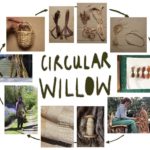
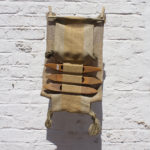
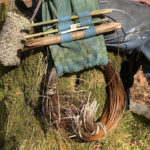
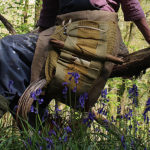
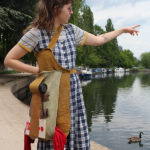
{ Comments are closed! }